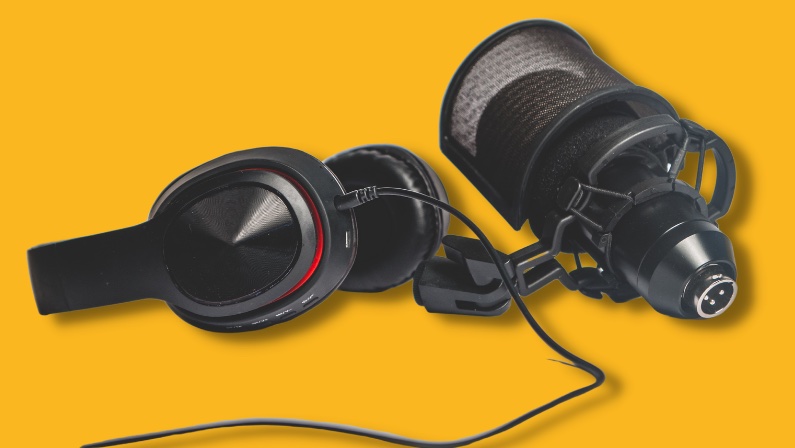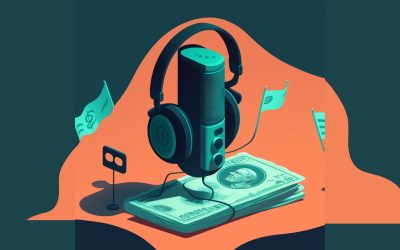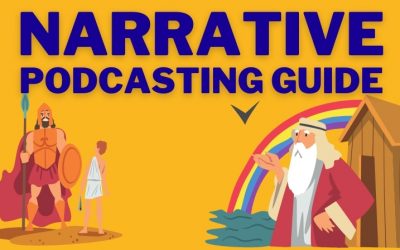You have decided to start a podcast but are wondering how to start it. After all, starting a podcast isn’t just about recording and publishing the episodes. There’s a lot of preparation, a lot of stuff to do.
this article will give you a complete and organized guide for starting your very first podcast, if you’re interested in hiring a podcast manager to take care of everything for you, click here to fill a form to get a free strategy call with me.
So without further ado Let’s roll with the article!
Why do you want to start a podcast?
Before we get to the whats and hows, let’s start with the why. Why do you want to become a podcaster? Is this something you’ve always been interested in, and now you finally want to try it out? Is this your dream or ambition? Are you doing it because there’s nothing better to do? Do you plan to become a professional podcaster someday? Will this be your main source of income?
All these questions are important to begin podcasting. Your purpose maps your journey. Depending on your purpose to start a podcast, you might find different things to take out of our guide. So before we get to the technicalities, you should figure out your reason and your goal.
What do you need to start a podcast?
First, you need to gather all the equipment, the preparation, and other things required to start a podcast. This is a daunting phase, so read carefully while we get into it.
Equipment:

If you want to begin podcasting, you will need some equipment for recording, editing, and such. Let’s see what they are:
- Computer (+internet access): Well, this one is obvious. You need a computer or a laptop with an internet connection for editing and managing your podcast. These things are nearly impossible to do on the phone, so you shouldn’t rely on that.
- Microphone: This is the basic necessity to record a podcast. Your computer or laptop might have a built-in one. But that’s going to give you super low-quality audio. The better the audio quality, the more professional you will sound.
- Headset: Earbuds or headsets will help you understand the quality of your audio and determine whether your whole setup is working or not. You can also know if your voice needs to be louder or whether the mic picked up unwanted noises. So a headset is important. Buy one that fits your budget but also has all the required features.
- Pop filter/windscreens: While recording, the mic might pick up the bursts of your breath. For a listener, this can be irritating. A pop filter and windscreen will prevent the mic from picking up harsh noises.
- Audio interface: This will help you expand, control, and improve your computer’s audio capabilities. It’s not a basic necessity for the podcast, but it’s highly recommended for better audio.
- Microphone stand: A mic stand will let you adjust the mic angle according to your convenience. Moreover, you can keep the mic at a stable distance from your mouth in contrast to holding it with your shaky hand.
- Shock mount: This might come included with the stand or the microphone itself and it is to limit the shock sounds that might occur while you’re recording (Unwanted noises can include typing, tapping, mic movements, and different kinds of vibrations.) If you don’t want your mic to pick up unwanted noises, this will do the magic because You don’t want your listeners to feel irritated by them.
Preparation:
You have all the equipment; now it’s time for you to prepare to record your first podcast episode. Here’s what you need-
- Topic: Choose a topic or a theme for your podcast. It’s better to remain consistent on a single topic in the beginning. You can expand the area later. Choose a topic that you’re confident and knowledgeable about but also people will be interested in.
- Name: Pick a name relevant to your topic so that listeners can get an idea about what it may be about without reading the description. The name should be catchy, witty, and attractive, but nothing too complex. If you plan to expand your podcast topics, later on, choose a name that can be an umbrella to all those potential topics.
- Description: Write a catchy description for your podcast. It should not be too long, but it should make people want to check it out. Show personality in the description so that the audience feels connected to you.
- Show format: Having a single, consistent format is important. Typically, it goes teaser-intro-music-welcome message-main topic discussion-CTA-outro music. However, you may choose your own style.
- Get the setup ready: Place your mic in front of you. Get all the other equipment connected. You need a soundproof recording area to the best of your abilities. Drink some water to clear your throat. And now you’re ready to record your first ever podcast episode.
Others:
The preparations are done, now let’s get to the main work:
- Recording: Time to record a podcast episode! It’s best to have a script ready if you’re not confident with talking seamlessly. Try to cover the whole topic of the episode without leaving any gaps. Speak in an organized and eloquent way. Once you’re done, listen to the recording carefully again and search for mistakes. If you think you need to record again, do it!
- Cover art: Your cover art is your first impression aside from the podcast name. Make sure it’s pretty, attractive, and matches the theme of your topic. You can use apps like PicsArt or Canva for it.
- Music: You will need intro music, outro music, and maybe background music. This will make the audience experience better you can find good music for podcasting here, or hire someone to create it for you.
- Editing: After recording, you have to edit it in a way that falls into the show format you choose earlier. Cut off the parts where you took long breaks between talking. Cut off the filler sentences and unnecessary tangents. It might be hard to use editing software as a beginner if you need some help click here
How to start a podcast?
Now that you have everything you need, it’s time to launch! This is the final step to start a podcast. I know this is super exciting. But there’s some more work to be done. Let’s see:
- Choose a hosting service: You need a hosting service to make it possible to store and distribute your podcast. Now there are many fishes in the sea, to see the best option that meets your needs check this article
- Upload the episode: The process differs according to the hosting service. The general thing is just to click the upload button and fill up all the required info. This includes the name of the episode, summary, cover art, date, and such.
- Spreading the word: Don’t get disheartened if you don’t get a million listeners within the first five minutes. That’s not how it works. You need to spread the word! you’ll need to promote it and make a proper launch, check this article that will give you all the steps you need to know.
So that was the beginning of your podcasting adventures. I know it sounds like a lot of work, but trust me, you will become addicted to the fun of being a podcaster once you start it. And remember, there’s no better time than now!






0 Comments